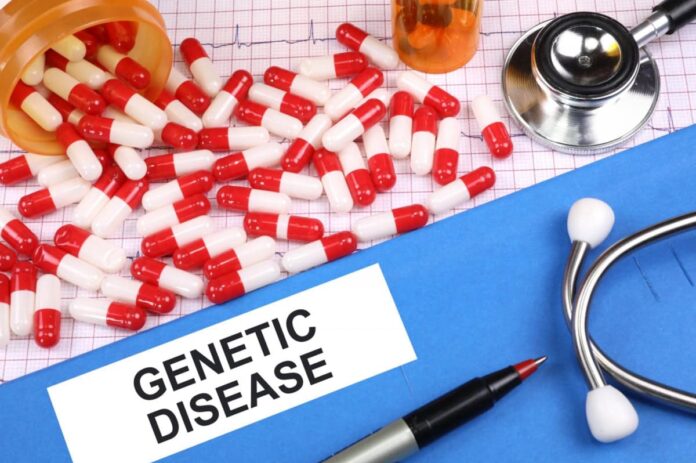Inherited diseases are one of the things that children inherit from their parents in their genes. We tend to look like or similar to our parents, but genes can run way deeper than just the appearance. Sometimes diseases or medical conditions occur in every generation while it tends to skip some other times. Asking about one’s family health history is the way to discover and learn about this condition. However, there are some inherited diseases that are common in most families and we have 10 of them for you below.
1Alzheimer’s
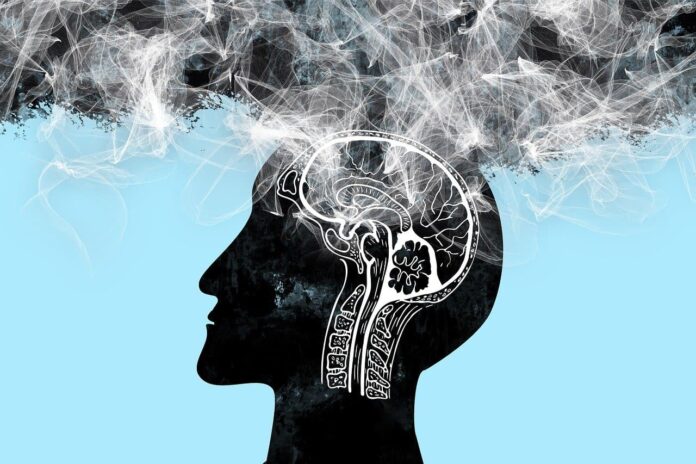
Alzheimer’s is a brain disorder that slowly destroys a person’s memory, thinking skill, and ability to carry out simple tasks. Changes in the brain may begin a decade or more before the symptoms appear. During the very early stage of Alzheimer’s, toxic changes are taking place in the brain. These include abnormal buildups of proteins that form amyloid plaques and tau tangles then previously healthy neurons stop functioning. That leads to connection loss with other neurons before neurons start to die, the damages are at the parts that form memories. As more neurons die, additional parts of the brain are affected and begin to shrink. Memory problems are one of the first signs of cognitive impairment related to Alzheimer’s, a condition called Mild Cognitive Impairment. With this condition, people have more memory problems than normal for their age but it does not interfere with their everyday lives.
Besides these, movement difficulties and problems with the sense of smell can also be other symptoms. Older people with this condition are at greater risk for developing Alzheimer’s, but not all of them do so. The first symptoms of Alzheimer’s vary from person to person, and the decline of non-memory aspects of cognition is also common. Those include impaired judgment or reasoning, vision/spatial issues, or word-finding, which may signal the very early stages of the disease.
It is the most common cause of dementia among older adults whose ages are 65 or older. Dementia is the loss of cognitive functioning, reasoning, remembering, thinking, and behavioral abilities that ranges from mild to severe stage. In the mild stage, it affects a person’s functioning while the severe stage requires the person to completely depend on others. Dementia is a terminal condition with symptoms like confusion, memory loss, and problems with speech and understanding.
2Arthritis

Genes are one of the reasons that may increase the risk of developing arthritis in a person. Arthritis is the swelling and tenderness of one or more of a person’s joints, causing pain and stiffness. The most common types of arthritis are osteoarthritis and rheumatoid arthritis, and the conditions or symptoms worsen with age. Osteoarthritis causes cartilage to break down while rheumatoid arthritis is when the immune system attacks the joints. Some common symptoms of arthritis involve the joints including decreased range of motion, pain, redness, stiffness, and swelling. Along with that, uric acid crystals that form when there is too much uric acid in your blood can cause gout. Sometimes infections or underlying diseases such as lupus or psoriasis can also cause other types of arthritis.
Osteoarthritis involves wear-and-tear damage to your joint’s cartilage, resulting in bone grinding directly on the bone. This causes pain while restricting movement, and it can occur over many years. Osteoarthritis also affects the entire joint, causing changes in the bones and deterioration of the connective tissues or joint lining inflammation. As for rheumatoid arthritis, the body’s immune system attacks the lining of the joint capsule which causes inflammation and swelling. The process can eventually destroy bone and cartilage within the joint. Severe arthritis affects a person’s arms or hands, making it difficult for them to carry out daily tasks. Weight-bearing joints arthritis can keep a person from sitting up straight or walking comfortably. In serious cases, joints may become deformed and twisted. Some types of arthritis run in families, so you are likely to develop arthritis if your parents have the disease.
3Asthma
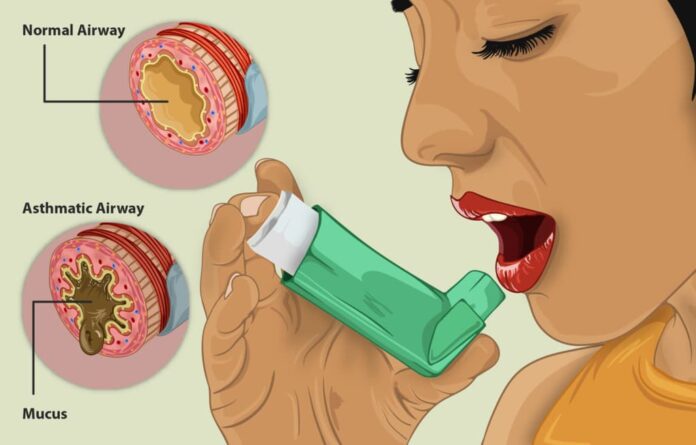
Anyone can get asthma, and it can start at any time in life but it also runs in the family. If one or both of your parents have asthma, you are most likely to have it too. As one of the most common inherited diseases, three-fifths of all asthma cases are hereditary. Many people with asthma may also have eczema or hay fever, and boys develop an allergic condition more than girls. A lot of children seem to grow out of asthma by their teens although they may get it back. For adults and children with severe asthma, the disease tends to remain.
Asthma is a chronic lung disease that causes inflammation in the airways, leading to sensitive and swelling airways. The most common symptoms of asthma are coughing and wheezing, and living with smokers make the symptoms become more serious. Some other symptoms include breathing difficulty, chest tightness, and shortness of breath. Sometimes triggers can cause a short period of worsening symptoms called asthma attacks which is when their bronchial tubes constrict. During an asthma attack, the symptoms may become severe and the person will need an inhaler or emergency medical attention.
4Autoimmune Conditions

Although 70% of autoimmune diseases may come from environmental factors, family history and genetics also play a role. An autoimmune disease is a health condition in which your body’s immune system attacks its own cells and tissues. Most autoimmune diseases cause inflammation that can affect many parts of the body, and women are more susceptible than men. The first common signs and symptoms are abdominal pain, digestion problems, fatigue, fever, joint pain and swelling, muscle aches, swollen glands, etc. These symptoms often come and go, and they can be either mild or severe. Some autoimmune diseases target only one organ, for example, type 1 diabetes damages the pancreas while lupus affects the whole body. There are more than 80 autoimmune disorders including Addison’s disease, celiac disease, Grave’s disease, lupus, multiple sclerosis, rheumatoid arthritis, and more.
5Blood Clots

Blood clot either completely or partially blocks the flow of blood through the blood vessel in an artery or vein. A genetic tendency for clot formation is one of the causes of blood clots, one of the most common inherited diseases. People with inherited conditions tend to develop blood clots before 45 years of age, mostly without a cause. At the same time, they are also likely to have more than one blood clot in their lifetime. The symptoms of a blood clot are different depending on the location it occurs and its size. A more serious case called embolization, which is when the clot breaks off and travels to another part of the body. Sometimes a blood clot can break off and travels to the brain (embolic stroke) or to the lungs (pulmonary embolism).
6Cancer
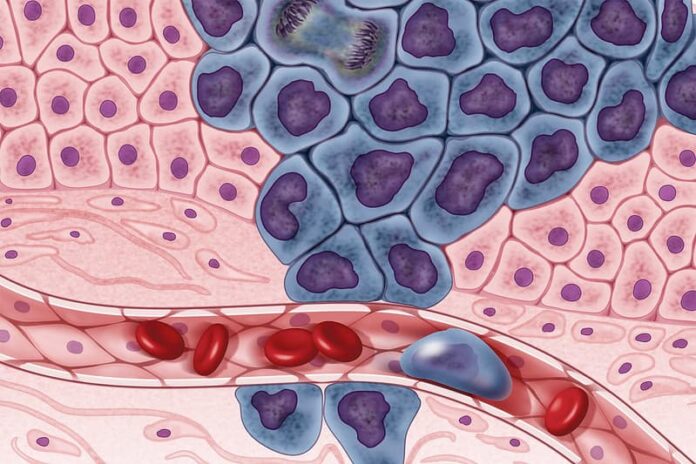
Certain types of cancer can run in families although most cancers are not clearly linked to our parent’s genes. Only a small portion of all cancers are inherited while some genes increase the risk of developing cancer. A few common inherited genetic changes increase the risk of breast cancer and pancreatic cancer in both men and women. Some increase the risk of prostate cancer in men while others increase the risk ovarian cancer in women. When a certain type of cancer seems to be common in a family line, it can be detected early. Doctors may be able to identify the specific genetic change causing the risk before the cancer even develops. One of the ways of detecting an inherited cancer syndrome is by checking the cancer history of the family. This also helps the doctor to look into the problems quicker as well.
7Cardiovascular Disease

Cardiovascular disease is a general term for conditions that affect the blood vessels or the heart. There are certain heart diseases that can be passed down genetically, and there are symptoms that you can notice also. When a family member is diagnosed with heart disease or heart disorder, other members should undergo screening for risk factors. The most common inherited diseases that affect the heart are:
Familial Dilated Cardiomyopathy
A person with this inherited disease experiences thin and weak heart muscles that can affect on both sides of the heart. As the muscle stretches, the affected chamber becomes enlarged which makes the blood pump less efficiently. This can lead to heart failure, the condition where the heart cannot pump blood to keep up with the needs of the body. The symptoms of this disease are fainting, fatigue, shortness of breath, or swelling of the abdomen and legs. Meanwhile, some people don’t have or notice any symptoms at all and that can be a major problem. Without proper treatment, familial dilated cardiomyopathy can lead to heart failure or early death.
Familial Hypertrophic Cardiomyopathy
This is a fairly common inherited heart condition that can affect people of any age. It can thicken parts or all of the heart muscle, and in extreme cases, it can even cause sudden death. The thickening part often occurs in the interventricular septum which is the wall that separates the left and right ventricles. When this happens, it prevents proper blood flow from the heart and forces it to pump harder than it should. Then it raises the pressure inside the heart chamber, causing the person to feel short of breath. This can also cause the risk of abnormal heart rhythms. Symptoms can vary among family members including chest pain, mild palpitations, or not having any symptoms at all. Getting medical help early can help prevent the disease from causing complications or progressing, and manage the symptoms.
Familial Hypercholesterolemia
You know that cholesterol is a fat-like substance that is in every cell of your body. The human body needs some cholesterol, but too much of it can accumulate in the body. Low-density lipoproteins (LDL) are the bad cholesterol that builds up and narrows arteries which can partially or completely block blood flow. Familial hypercholesterolemia is the cause of coronary heart disease that can lead to a heart attack or stroke if untreated. If it is a genetical disease, symptoms can begin at a very young age. A person with familial hypercholesterolemia has a very high LDL that is above 190 milligrams per deciliter (mg/dL). Some people have a heart attack as early as 20 years of age, depending on their habits and lifestyle. Lack of exercise, greasy food, and smoking are the factors that push the disease and symptoms to develop faster.
Besides these 3 most common problems, there are other inherited conditions including:
- Bicuspid aortic valve disease
- Cardiac amyloidosis
- Cardiac tumors
- Familial thoracic aortic aneurysm syndrome
- Heart arrhythmias
- Heart valve disease
- High cholesterol
- Pulmonary hypertension
8Diabetes
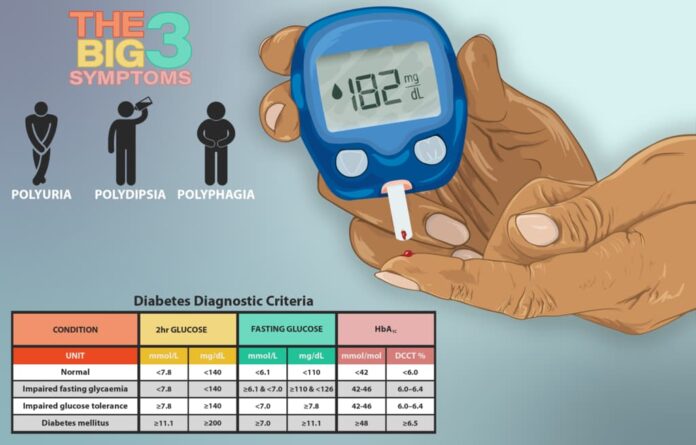
Diabetes is one of the dangerous inherited diseases that can pass down to children either from their mother or father. Type 1 diabetes occurs when the body’s immune system attacks and destroys the cells in the pancreas that make insulin. This will result in hyperglycemia which refers to the high level of glucose in the blood. This form of diabetes usually appears in childhood or early adulthood, but it can occur at any age. The child risks are:
- The risk of the child developing diabetes is 1 in 17 if the father has type 1 diabetes.
- If the mother has type 1 diabetes, things are more complicated. The child was born before she is 25 years old is at the risk of 1 in 25. If the child was born after she is 25, the risk is 1 in 100.
- In case the parents develop diabetes before 11 years of age, the child’s risk is between 1 in 10 and 1 in 4.
- For parents who have diabetes along with thyroid disease, immune system disorder, and/or poorly working adrenal gland, things are serious. The child’s risk of developing type 1 diabetes is 1 in 2.
- If the father has type 2 diabetes, the risk factor is about 30%.
- The risk factor is slightly higher if the mother has type 2 diabetes.
- If both parents have diabetes, the risk factor increases to about 70%.
Note
- As for type 2 diabetes, it occurs when the body does not use insulin properly. Around 90% – 95% of all diabetes cases are type 2, and it typically develops in people who are older than 45. The good thing is that it is possible to delay or prevent it in children or youth with healthy lifestyles. Type 2 diabetes can result from a combination of both environmental and genetic factors. Some factors that increase type 2 diabetes are elevated blood pressure, gestational diabetes history, smoking, poor dietary practices, obesity, and a sedentary lifestyle. The risk of developing it is higher in kids if the mother, rather than the father, has diabetes.
Prevention
The risk of inheriting diabetes is inevitable; however, you can prevent developing diabetes by following some methods:
- Avoid junk food or fatty foods
- Exercise daily for 30 – 40 minutes
- Monitor blood level sugar regularly
- Ensure a balanced diet with proper nutrition
- Limit alcohol intake and refrain from tobacco
- Lead a healthy lifestyle by maintaining a healthy weight
- Increase the intake of some essential minerals like magnesium
9Eye Health
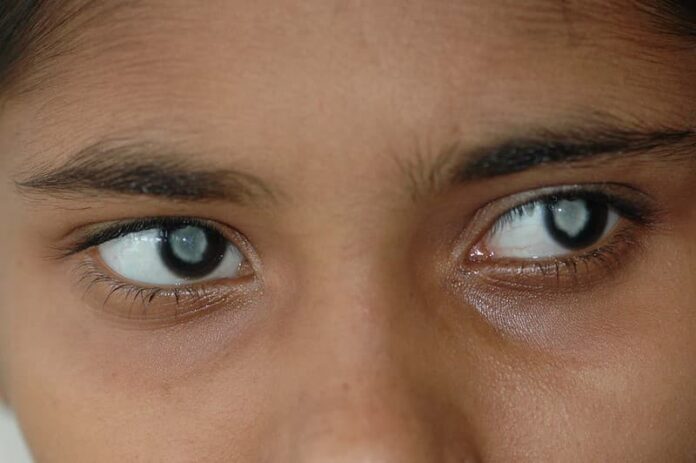
Nearsightedness and farsightedness have a strong genetic component, especially if a parent is very nearsighted or farsighted. There is a good chance their child will be the same if both parents are nearsighted or farsighted. The thing is that vision is not all in the genes, there are also other significant environmental influences. Some studies suggest that students who spend a lot of time reading develop nearsightedness more quickly than others do. The most common genetically-linked eye problems include color vision deficiency (color blindness), farsightedness, nearsightedness, and retinitis pigmentosa. Some problems that have mixed causes are age-related macular degeneration, amblyopia (lazy eye), glaucoma, and strabismus (cross-eyed).
Things are more serious because genetic factors play a role in many eye diseases, including the ones that lead to blindness. Over 60% of blindness cases among infants are caused by inherited eye diseases such as congenital cataracts, congenital glaucoma, eye malformations, etc. Around 40% of patients with certain types of strabismus have a family history of the disease passed down to their children. In adults, age-related macular degeneration and glaucoma are the main leading causes of blindness. Genetics also play a role in vision problems that occur in otherwise healthy eyes. Genetic ophthalmologic researchers now have evidence that the most common vision problems among children and adults are genetically determined. Those include amblyopia, astigmatism, hyperopia (farsightedness), myopia (nearsightedness), and strabismus.
10Marfan Syndrome

In most cases, Marfan syndrome is inherited because people with this syndrome have a 50% chance of passing it. Marfan syndrome is a condition that affects the connective tissue that holds the body together and provides support to body structure. This syndrome affects many body systems such as blood vessels, bones, cartilage, eye(s), heart, lungs, nervous system, and skin. It is caused by a defect in the gene that encodes the structure of fibrillin and elastic fibers. People with this syndrome have different symptoms, and it occurs in people of all races and ethnic backgrounds. Marfan syndrome is present at birth, but it takes until adolescence or young adulthood to diagnose. Medical and surgery are available to control or prevent complications and prevent aortic dissection or rupture.
People with Marfan syndrome are often very tall and thin, with a curvy spine and sternum sticking out or indented. Their arms, legs, fingers, and toes may seem out of proportion, too long for the rest of their body. At the same time, they also have a long narrow faces with the roof of the mouth higher than normal. This causes the teeth to be crowded, and they may also suffer from skeletal problems besides dental problems. The joints of people with Marfan syndrome may be weak and easily become dislocated or unusually flexible joints. More than half of people with this syndrome have eye problems including lens subluxation, nearsightedness, and other eye problems. Besides this, they also suffer from blood vessel changes, heart valve problems, lung changes, and skin changes.
11Osteoporosis

Osteoporosis means spongy (porous) bones, and it often has no symptoms. The first sign that a person may have it is when they break a bone in a relatively minor fall or accident. Fractures are most likely in the hip, spine, or wrist where the impact hits the hardest. Osteoporosis runs in families, but heavy drinking, heavy smoking, and poor diet can also cause it. A few other risk factors for developing osteoporosis are steroid consumption, lack of estrogen in the body, lack of weight-bearing exercise, etc. It is one of the inherited diseases that are common in the UK, and its risk increases with age. Anyone can get osteoporosis, but women are about 4 times more likely than men to develop it. There are two main reasons that cause this disease:
- The process of bone loss speeds up for several years after menopause.
- Men generally reach a higher level of bone density before the process of bone loss begins. Bone loss still occurs in men, but it has to be more severe before osteoporosis occurs.
- To protect yourself against osteoporosis, there are a few things that you can do. Those include exercises, proper diet and nutrition, and a healthy lifestyle without heavy drinking and smoking.
Source
https://www.ihtc.org/inherited-blood-clots
https://www.everydayhealth.com/diabetes/genetics/
https://www.nia.nih.gov/health/alzheimers-disease-fact-sheet
https://www.medicalnewstoday.com/articles/324447#summary
https://www.vsp.com/eyewear-wellness/eye-health/eye-problems
https://www.alzheimers.org.uk/about-us/news-and-media/facts-media
https://www.versusarthritis.org/about-arthritis/conditions/osteoporosis/
https://my.clevelandclinic.org/health/diseases/17209-marfan-syndrome
https://www.cancer.net/blog/2019-10/can-cancer-be-passed-down-families
https://my.clevelandclinic.org/health/diseases/17130-eye-disease-inherited–genetic
https://www.asthmafoundation.org.nz/your-health/living-with-asthma/who-gets-asthma
https://www.medicinenet.com/is_diabetes_inherited_from_mother_or_father/article.htm
https://www.mayoclinic.org/diseases-conditions/arthritis/symptoms-causes/syc-20350772
https://www.healthline.com/health/autoimmune-disorders#common-autoimmune-diseases
https://www.webmd.com/women/news/20010220/autoimmune-diseases-its-not-just-genes
https://www.pennmedicine.org/updates/blogs/heart-and-vascular-blog/2019/january/inherited-heart-diseases
https://www.rwjbh.org/treatment-care/heart-and-vascular-care/diseases-conditions/inherited-cardiovascular-disease/
Related Post: Incurable Diseases You Might Not Know

